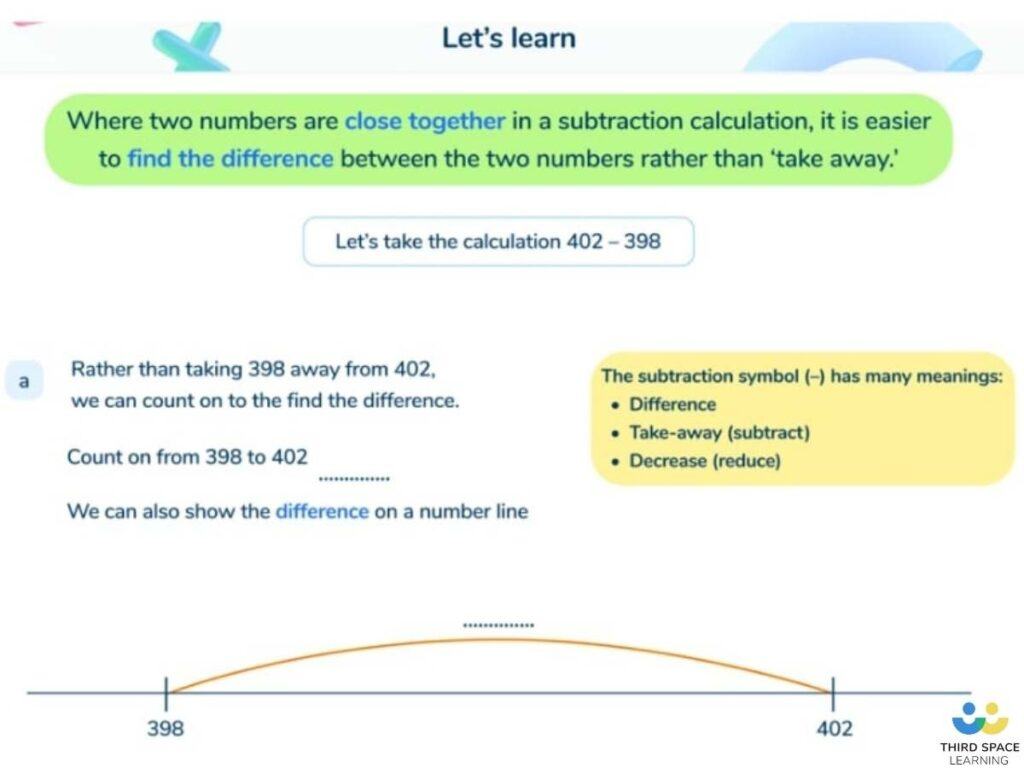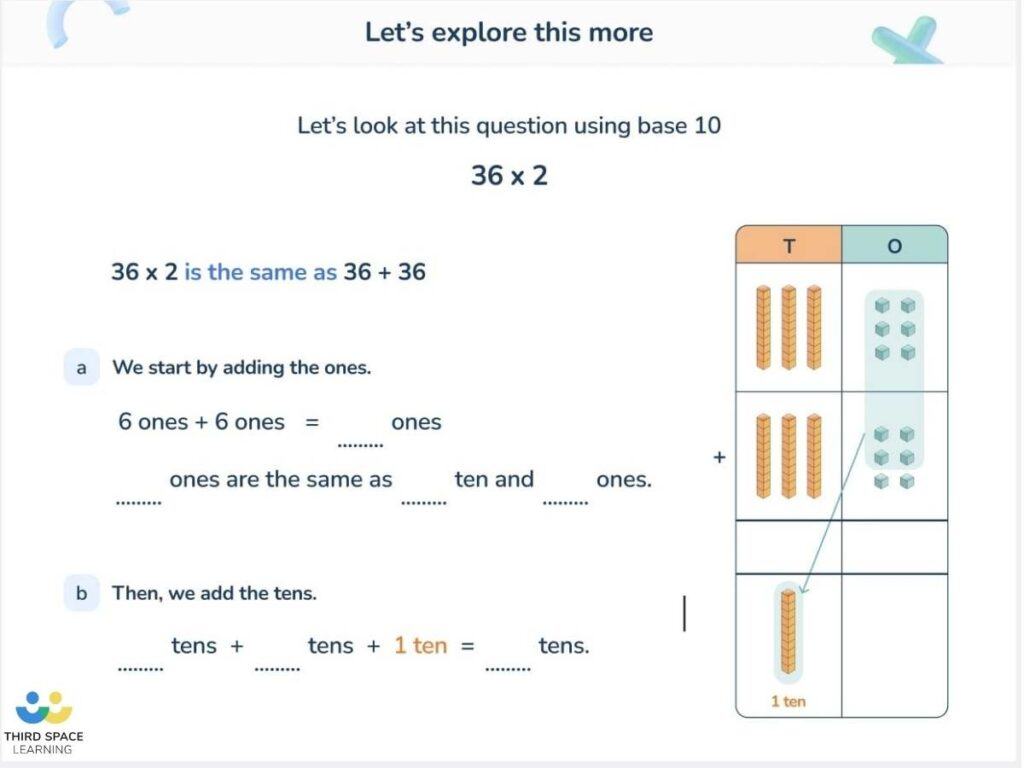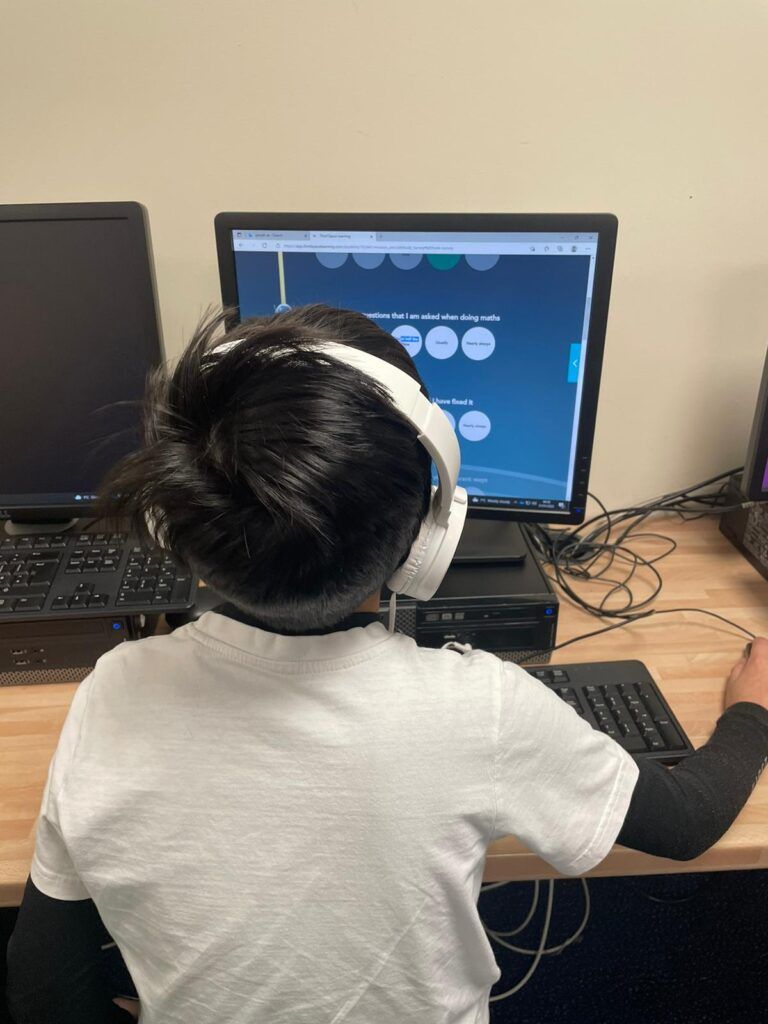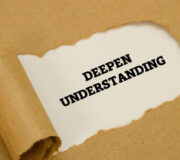How Autism May Affect Students’ Understanding Of Math And What Teachers Can Do To Help
Here we look at the impact of autism on math from my perspective as an autistic teacher who’s spent many years working in schools; as such I’ve taught children with all neurodiversities and have my own unique insight into some of the challenges that math and especially math problem solving can have for the autistic learner.
We look at the key barriers to learning that some autistic children face when learning math, the roots of these and how teachers can remove them without extra workload and more sleepless nights planning and preparing lessons.
- Autistic learners are part of a neurodiverse classroom
- Overwhelming volume of content in the curriculum
- How to think about abstract concepts in math
- Questions to consider when teaching autistic children math
- How autism can affect math problem solving
- Why are these connections not obvious to our learners?
- Processing time is crucial
- Understanding how key mathematical connections need to be taught and practiced
- Putting a plan in place to build relationships and agree expectations
- Allow for verbal processing or any other special needs
- Reassure and encourage
- Autism math takeaways
Autistic learners are part of a neurodiverse classroom
Autism Spectrum Condition is a neurological and developmental condition that affects how those with autism interact with other people, including how they communicate, behave and learn.
Autism is a wide and varied condition and presents itself in a broad array of ways, meaning that not all autistic people will behave or face the same challenges when learning math or any other subject.
Autistic children, like any children, can make great mathematicians and can have many cognitive strengths and even savant abilities. However, in some cases, different approaches may need to be utilized to best teach math concepts to autistic students and unlock their mathematical ability.
For example, for some autistic learners, the classroom environment itself can be a challenge, especially if it is brightly lit, heavily decorated or loud. Sensory overload can be a big obstacle, preventing students from being able to focus on what they are learning.
Read more: How To Support A Child With Autism In The Classroom
Overwhelming volume of content in the curriculum
Math mastery recognizes that children need to have a deep understanding of mathematical concepts and how these concepts connect with one another. In order for this to happen, there needs to be time for processing.
However, the math curriculum can often feel like a race for teachers as they try to cover all topics by the end of the year. This can be detrimental for those children who require more processing time; they can begin to lose the connections they need to build on their knowledge.
When content is covered so quickly, the time for students to process new information is cut short. For some autistic children, this rush through the material can cause sensory overload, as there is a large amount of information to process at one time.
The fast pace of schools (especially in light of the pandemic), can lead to lots of gaps in learning as the student is trying to process the first concept while the teacher has moved on to the next.
This fast pace, combined with the already multisensory environment of a classroom, can be overwhelming for autistic students.
There is now a gradually increasing recognition that all children need more time to acquire a deep understanding of the connections in math, and perhaps that the curriculum needs to be narrower in order for these connections to be really understood.
Third Space Learning’s one-to-one intervention program mitigates this by first identifying the gaps in students’ understanding and developing a tailored set of lessons. These are then covered by a tutor who supports the student at a pace that works for them, moving their learning forward and closing the gap.
How to think about abstract concepts in math
There is a fallacy that autistic children cannot learn or understand abstract concepts. This is incorrect.
What autistic children often struggle to understand is not the abstract concept itself, but rather when they are not taught that something is an abstract concept.
In this case, autistic children can think that they are expected to understand abstract concepts in the same way as concrete ideas.
In teaching, it is easy to move seamlessly from concrete to abstract, but it is also easy to forget that children do not always know where that seam lies. This is a crucial aspect of teaching if autistic learners are to grasp the necessary connections.
The best way to ensure more explicit connections is to try to understand every possible angle from which the subject matter can be learned. This can be done by getting into the habit of asking yourself a series of questions.
Questions to consider when teaching autistic children math
Here are some questions that you could consider when teaching any child, but especially autistic children. Of course, they are particularly pertinent to the types of math problem solving we encourage all children to explore throughout their math education.
- What could be misunderstood?
- What words or phrases are there that need explaining?
- Are there everyday words used in the subject matter that mean something different in math?
While it might sound obvious, we as teachers need to have a deep familiarity and knowledge of the subject matter and all the different connections with every area of math, before being able to communicate these to any child, especially autistic children.
This does not necessitate having a 1st class degree in mathematics. It means developing the practice of being a learning detective and looking for clues when children do not have those connections in place.
It’s about finding ways to communicate first in everyday language, and then explaining the formal math language.

The missing connections are often much more basic than is often immediately obvious.
How autism can affect math problem solving
Autistic children can experience deficits in executive functioning. This can lead to difficulties in math word problem solving as it involves:
- Organizing information and operations
- Flexibly moving between pieces of information
- Identifying the relevant information in the problem
- Understanding the problem holistically
All of these difficulties, in turn, have a direct effect on math word problem solving for students with Autism Spectrum Condition.
Autism and math example: times a number by 2
I recently asked a 10th grade student to multiply a number by 2. He did not know how to do it until I suggested that he add the number to the same number and then he got it. He tapped himself on the head and said “Oh yes”, but it was not immediately obvious to him.
Why, though? What is the root of him not having that connection embedded in his thinking? I suggest it is because that was missed in elementary school, and he has slipped through the net of that connection not being recognized.
How is it possible for a 10th grade student to have gone through 5 years of math and this missed information not be recognized?
In Third Space Learning’s one-to-one tutoring programme, tutors try to convey these connections to students. For example, demonstrating that multiplying by two is the same as adding the same number twice.

We know, as teachers, how it is possible because teachers are teaching between 20 to 35 students in the classroom, all with an increasing number of missed connections and math skills.
We are trying to constantly plug the gaps that are obvious without realizing that the roots go so much deeper.
There are lots of ways to say the same thing, which can be confusing for anyone. Some people with autism will need to be explicitly taught the meaning of words or phrases in context.
For example, if a student with autism has only encountered the word ‘table’ in the context of a piece of furniture, they may not understand what you are referring to as a mathematical table without explicit teaching.
Why are these connections not obvious to our learners?
Elementary school is where these basic connections are created and learned. Children are not generally taught to make connections; they are assumed to recognize the connections from what is taught.
An elementary school teacher said to me that if a child has a good understanding of an area of math, they will recognize that area in a math problem-solving question.
This is an assumption that simply cannot be taken for granted. Autistic learners will often resort to the last thing they knew how to do.
Autism and math example: multiply -7 × 6
I recently asked a student to multiply -7 × 6. He told me the answer was -1. His confusion was that there was a minus sign in the question and he did not know what to do with it.
However, he knew that he needed to do something, so he did what was familiar to him (addition problems) and instead answered the question -7 + 6, arriving at the answer -1.
So, why was this? It was because he had only remembered what to do with adding and subtracting negative numbers, but multiplying and dividing with negative numbers was not familiar to him.
While students might recognize several aspects of math within the question, they may not know what to do with them.
Autism and math example: multiply 15 × ½
I asked another student to multiply 15 × ½. The first thing he said was that he had to find a common denominator. He saw the ½ and remembered something about common denominators. He could not access the question itself.
We then spent about 20 minutes multiplying fractions, but before that, I also spent some time talking about how all whole numbers can also be written as fractions and why this is the case.
We discussed how multiplying and dividing by fractions is counter-intuitive, and why for example, 3 ÷ ½ = 6 because there are 2 halves in 1 whole one, and therefore 6 halves in 3 whole ones.
Processing time is crucial
These examples demonstrate abstract concepts learners have not had enough time to process in their lessons. Students will always resort to the most familiar thing that they are sure of, even when that is not what the question requires.
Even when a child understands, in a passive way, when the teacher explains a concept, it does not mean they will remember it and be able to apply it later on. The amount of processing needed is likely to be considerably more than what may be assumed by us as teachers.
If we also consider that many people with autism struggle to process information quickly, we start to see where they may struggle in the fast-paced, busy and noisy environment of a classroom.
Understanding how key mathematical connections need to be taught and practiced
The above mathematical connections are those that learners stumble over in problem-solving questions. It is not because they cannot accept abstract ideas, it is because they have not understood how those ideas connect.
They will continue to make the same mistake over and over again if these lost connections are not recognized by teachers, talked through and explained. This enables the child to know they have time to process, practise and get the answer right.
Putting a plan in place to build relationships and agree expectations
Autistic children will be very unlikely to say if they do not understand. They will either have a go and get the wrong answer, or they will panic and not even attempt the question. It is also highly likely that they will not want immediate attention because they do not want anyone to notice them as needing help.
It is a good idea to discuss this with parents and the student before the year begins so that an agreed plan for how to help the student is put in place. This plan is something the student should feel happy about, as well as feel like they can take ownership of it.
This kind of behavior is not just the case for elementary school age autistic children. I have taught mature students of 30+ who have literally run out of the room of a small class of nine students because they did not understand, did not want the attention drawn to them and left the room upset.
This is not trivial. Autistic learners do not grow out of being autistic.
However, if a plan is put in place then they will be extremely effective at learning. Feeling safe, having clarity, and having processing time (and sometimes this means having a separate place to work on questions), are all not only helpful but essential for autistic learners.
Third Space Learning’s one-to-one set-up can really help in this area as the pressure of the onlooking class is removed; the interaction is purely between the student and the tutor.

Allow for verbal processing or any other special needs
As not all autistic students learn in the same way, it is important to be in tune with the special needs of the individual student.
Many autistic learners are verbal processors. For example, sitting math tests in silence means that they are automatically at a huge disadvantage. This is something I have become increasingly aware of over my years of teaching, and this is not something that students grow out of.
One mature student in her thirties told me if she did not have a room of her own when she worked through her exams, she simply would not pass.
I made sure she did have this, and she talked her way through the whole exam, reading the questions out loud, and talking through her methods as she wrote.
She passed.
However, a considerable number of students are not aware of their own need to process in this way. During a Q&A time in the classroom, it is important to allow students to feel safe to answer questions and for their answers to be seen as part of their processing and not necessarily the final answer.
Reassure and encourage
To shut them down with either “that’s incorrect” or passing on immediately to another student with their hand up is discouraging and means that student may be unlikely to try again.
If they do not understand that they have got perhaps, halfway to the answer, then they will assume they simply cannot do math and give up quickly thinking they can.
While elementary schools often allow students to talk during class depending on the teacher, in middle schools and high schools the situation can be a huge jump.
The transition from elementary to middle can have the effect that students become bewildered as they are unable to access the questions due to not being able to talk or read them out loud.
This is where elementary schools can inform middle schools about identifying those children who are verbal processors. This is not trivial. This is not going to change with age; a verbal processor in childhood is a verbal processor in adulthood.
Autism math takeaways
The key to successfully teaching autistic students math is really understanding the student and their needs. Remember that autism is a spectrum and affects each individual differently. Therefore, it is crucial to understand what teaching strategies your student responds to best.
We hope that this blog can give teachers ideas on techniques to deploy in the classroom to engage autistic learners.
Read more:
Do you have students who need extra support in math?
Give your students more opportunities to consolidate learning and practice skills through personalized math tutoring with their own dedicated online math tutor.
Each student receives differentiated instruction designed to close their individual learning gaps, and scaffolded learning ensures every student learns at the right pace. Lessons are aligned with your state’s standards and assessments, plus you’ll receive regular reports every step of the way.
Personalized one-on-one math tutoring programs are available for:
– 2nd grade tutoring
– 3rd grade tutoring
– 4th grade tutoring
– 5th grade tutoring
– 6th grade tutoring
– 7th grade tutoring
– 8th grade tutoring
Why not learn more about how it works?
The content in this article was originally written by secondary math specialist Hilary Forbes and has since been revised and adapted for US schools by elementary math teacher Christi Kulesza.




